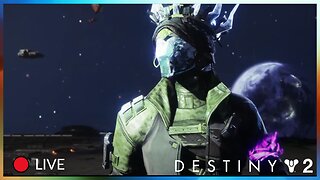"We Are Not Alone: Exploring the Possibility of Extraterrestrial Life"
Kepler-452b is an exoplanet that was discovered by NASA's Kepler spacecraft, part of the Kepler mission, which aimed to find Earth-like planets orbiting other stars. The planet was announced in July 2015 and is often referred to as "Earth's cousin" or "Earth 2.0" due to its similarities to our own planet.
Here are some key characteristics and details about Kepler-452b:
1. **Star System:** Kepler-452b is located in the constellation Cygnus, approximately 1,400 light-years away from Earth. It orbits a star called Kepler-452, which is very similar to our Sun but slightly older, making it a G-type main-sequence star.
2. **Size and Composition:** Kepler-452b is considered a super-Earth, meaning it is larger than Earth but still smaller than Uranus and Neptune. It is about 60% larger in diameter than Earth. The composition of Kepler-452b is not precisely known, but it is believed to be a rocky planet.
3. **Orbital Period and Distance:** The exoplanet has an orbital period of about 385 days, making its year duration relatively similar to Earth's. It orbits its host star at a distance comparable to Earth's distance from the Sun, falling within the star's habitable zone or the "Goldilocks zone." This zone is where conditions may be suitable for liquid water to exist, a key ingredient for life as we know it.
4. **Possibility of Habitable Conditions:** Kepler-452b's location in the habitable zone and its size make it an intriguing candidate for the search for extraterrestrial life. However, the actual habitability of the planet depends on various factors, such as its atmosphere, which are challenging to determine from current observational data.
It's important to note that our knowledge of exoplanets, including Kepler-452b, is limited by the technology and methods available for detection. Future missions and advancements in technology will likely provide more insights into the characteristics and potential habitability of distant planets.
-
 56:19
56:19
Total Horse Channel
2 days ago2024 Buckeye Reining Series | Saturday Night | 7:30 pm EST
47.4K3 -
 1:15:38
1:15:38
Steve-O's Wild Ride! Podcast
2 days ago $0.22 earnedG Eazy Opens Up About Falling Off - Wild Ride #217
54.3K14 -
 18:44
18:44
We Profit with Stock Curry
6 days agoUltimate Advice for Teens & Young Adults
60.6K14 -
 LIVE
LIVE
Lofi Girl
1 year agoSynthwave Radio 🌌 - beats to chill/game to
453 watching -
 21:00
21:00
Mr. Build It
23 days ago3 Ways to Build Garden Beds
46.7K15 -
 1:42:14
1:42:14
Jewels Jones Live
1 day agoDETRANS w/ special guest Mary Margaret Olohan | A Political Rendezvous - Ep. 78
49.3K22 -
 1:36:46
1:36:46
Roseanne Barr
1 day ago $73.82 earnedFor Love of Country with Tulsi Gabbard | The Roseanne Barr Podcast #50
163K461 -
![[D2] Rumble Featured!! Lets Go!!! #RumbleTakeOver](https://hugh.cdn.rumble.cloud/s/fw/s8/1/5/g/l/6/5gl6r.0kob-small-D2-Onslaught-Grind-w-Some-P.jpg) 6:28:15
6:28:15
CHiLi XDD
17 hours ago[D2] Rumble Featured!! Lets Go!!! #RumbleTakeOver
52.6K7 -
 2:45
2:45
Chicks in the Office
16 hours agoHolly Madison Talks Reconciliation with Kendra Wilkinson
65.4K40 -
 7:58:23
7:58:23
Di bear
18 hours agoFinal Season Mission, Pantheon | Destiny 2
67.7K7